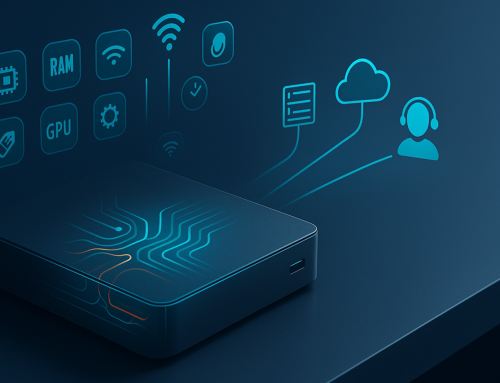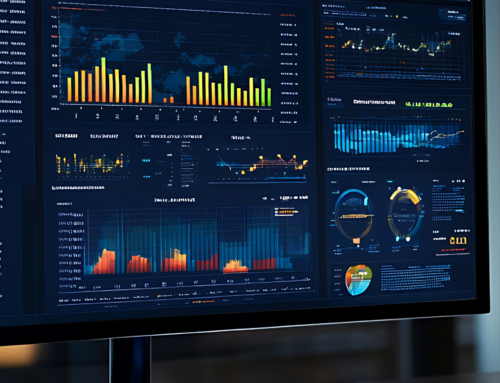Preface
I want to start by discussing monitoring in general. Monitoring products are in a funny place in the IT world. Many companies consider them a luxury and not necessarily a requirement. When they do start going down the monitoring road they almost always start by looking for a product that can do it all. This will typically lead to the conclusion (correctly) that there is no singular product that can do it all. One thing I learned while growing up with grandparents and my dad being produce farmers, you always pick the right tool for the job. As they say, and I believe this applies to monitoring software as well, if all you have is a hammer, everything is a nail.
TL;DR
Ok, lots of words here but what does all this mean?
YOU CAN BE PROACTIVE VERSUS REACTIVE!!!!!
Wouldn’t that be nice for a change?
How you may ask? Read on my friends!
And now I give you….Stratusphere UX
Stratusphere is designed from the ground up to measure and trend user experience. There is a lot of functionality in this product and, truthfully, I cannot do it justice in one blog. After you are done reading through this, please give these links a read as well to get a better understanding of the various topics I touch upon.
- What’s New in Stratusphere UX 6.1
- Putting User Experience at the Center of the Workspace
- Baselining the User Experience and Defining a Measure of Success with Stratusphere UX
- Monitoring vs. Diagnostics: The Balance of Proactive and Reactive
- Outside In. Inside Out. What’s the Difference?
To the matter at hand though. I’ve talked about FlexApp and ProfileUnity and how they enhance the user experience but how is the user experience defined? Truthfully, for each user, it’s a bit different. While I may be happy with my login time, my cube mate may not be. He may be happy with his Windows performance, but I may feel it’s laggy. It’s very subjective and as we (administrators, IT, etc) become more user oriented, this can be a problem. How do you measure that which cannot be defined? That brings us to Stratusphere UX.
To start with, I would never claim that Stratusphere can do everything, but it will work hand in hand with other monitoring products. Many customers are doing this today because, as I’ve said before, you pick the right tool for the job. There is no one ring to rule…..wait, I mean, there is no one tool to rule them all.
While the Stratusphere UX is lumped into the segment of monitoring software, it is all about giving you and your colleagues the ability to easily quantify the user experience. Sounds simple right? Citrix does that, VMware does that, other products can do that……Or can they? Citrix and VMware will really only look at their pieces of the puzzle. What if the problem doesn’t lie in the vendor portion? Stratusphere can monitor from the endpoint (physical, virtual, cloud) to the virtual desktop or Session Host they may be accessing, or you could simply monitor the endpoint. It’s entirely up to you. Stratusphere will give you the whole picture of what is happening from CPU, memory, disk and even collate event logs from the end point to the latency of the network to the protocol being used (ICA/HDX and PCOIP/Blast) to the hypervisor to the virtual machines and that’s just a small part of the data being collected. It doesn’t give you a slice of the pie, it gives you the entire pie!
Many people will initially look at a product like Stratusphere and use it to troubleshoot existing issues and then either sort of forget about it or only use it when an issue comes up. They will try to give the tool to their help desk to help them troubleshoot. Stratusphere can be used by the helpdesk but, truthfully, because Stratusphere is not real-time monitoring, it’s not the best tool for the help desk. Help desk usually needs a look at what is happening at this moment in time, not what was happening a bit ago, and they typically don’t have time to dig into root causes. Their job is to get the user back up and running and move on to the next call. There are tools designed to do exactly this and they work great. Troubleshooting is a valid use for Stratusphere and is an important piece but the ability to look at the bigger picture is critical and that’s what Stratusphere gives you, the administrator, through it’s ability to show long and short term trends. Let’s look at an example, someone on the help desk mentions to you, the administrator, that they’ve gotten several calls this week on a particular problem all from different users. The question now is, is it an anomaly or is something else happening that is affecting users? How would you typically handle a situation like this? Vendor tools may give you an idea if it’s within their sphere of influence but typically it’s only an idea. You still need to dig to find out what and where the actual problem lies. If you have a large farm of Remote Desktop Server Hosts (RDSH) or virtual desktops, this could be difficult to troubleshoot. Stratusphere has the information you need! You could start by looking at the just the users that called in to see what was happening and then, after identifying the actual issue, you can take a look at the bigger picture and see, is this happening to all users, a group of users or just these users. You now know if it is an anomaly or something else that you need to take care of before it gets out of hand.
Let’s look at another example with virtual desktops. Organizations moving to virtual desktops will try to size their virtual environment appropriately, but they don’t always have the tools to do so. It becomes a guessing game. It could be educated guesses, but it’s still guesses. Stratusphere can monitor the users desktops and give you the information to size the environment appropriately. Let’s not stop there though, in my experience, once the you start transitioning to virtual desktops, the users will almost always come up with complaints on something being slow. Typically, it’s login times but it could be application launch times or whatever. The phrase is “It’s not as fast as my physical desktop”. Unfortunately, I’ve seen many times where these concerns are dismissed by IT and IT continues to move forward migrating users. Why? Because many times there is no data to confirm or deny the end user observation. We, as IT, tend to think that the end user is just imagining these things much to our detriment. Now the migration hits executives and they see slowness, lag or whatever. Now it’s getting serious because if the execs are unhappy and they find out their employees are unhappy, guess what happens? The migration may fail and virtual desktops get a really bad rap at the organization making any attempt to try again almost assuredly a no go.
Stratusphere would have the data from the original end points and the new data from the virtual desktops. As the administrator, you could compare the data to see if there is an issue. On top of that, you would have network information and hypervisor information to tie it all together to get a look at the overall picture once versus a piecemeal look and manually having to correlate the information.
That’s great but what if you have a virtual desktop environment already, how does Stratusphere help there? Virtual environments can be tricky when doing capacity planning. A lot of times, capacity is reached, or very close, and the administrators are scrambling to expand as users are now complaining. What if you could see the trend of the usage of the desktops in relation to the virtual environment and see that consumption is growing at X% every month, quarter or year? Or maybe your company bought another company and you want to integrate them into your existing virtual environment? Unlike your existing users, you have no idea on how they work or consume data. Pushing Stratusphere down would give you that information. Either way, you look like a hero!








Leave A Comment
You must be logged in to post a comment.